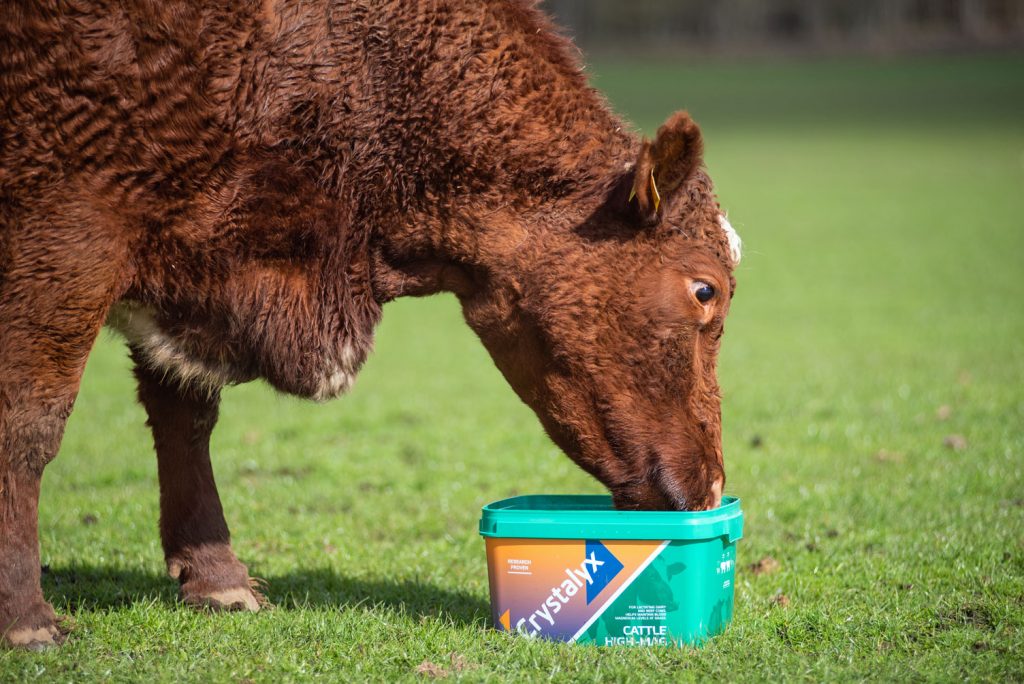Although the annual rate of hypomagnesaemia (AKA grass staggers or tetany) in UK dairy cows is less then 1%, one third of those affected cows will die. Clinical low blood magnesium cases remains one of the very few veterinary emergencies on farms, but are the tip of the iceberg. The rest of the group may also be sub-clinically affected by low blood magnesium. Making a strong case for offering a magnesium supplement for cows.
The grass staggers problem explained
There are no hormonal mechanisms in the body that allow cows to regulate their blood magnesium levels. The magnesium stored within the body is not readily mobilised by the cow. Maintaining blood magnesium levels is therefore entirely dependent on a short term (daily) absorption from the diet.
Lactating cows (both beef and dairy) are particularly prone to hypomagnesaemia when turned out on to spring grass and again later in the grazing season. In the spring, fresh calved cows with a high requirement for magnesium for milk production are at risk. The higher the milk yield, the higher the daily magnesium requirement. In the autumn, higher levels of rainfall along with sunshine and warm weather can speed-up the rate of lush grass growth and increase potassium levels, which in turn can reduce magnesium availability.
Recommended read: NADIS Grass Staggers Symptoms
Why does Hypomagnesaemia occur?
- There is a low magnesium intake (due to low levels in grass, when grass alone is fed), or
- The magnesium has a low availability (a poor efficiency of absorption) within the cow.
What impacts Hypomagnesaemia?
- A low soil pH reduces magnesium uptake by the grass.
- High potassium levels in grass reduces magnesium availability in the rumen.
- Increased rumen pH reducing magnesium solubility and absorbability.
- More rapid passage of food through the rumen reduces the time available for the absorption of magnesium.
Choosing a magnesium supplement for cows
There are 3 key criteria for an effective magnesium supplement:
- The magnesium level in the formulation,
- The palatability and therefore the intake realistically achievable*, and
- The availability of the magnesium to the cow.
* This is particularly important when the supplementary magnesium is free access and consumed by choice.
Crystalyx Cattle High-Mag contains 10.5% magnesium and is formulated with dehydrated molasses to ensure palatability even on lush spring grass.
Independent research at Glasgow Vet School has confirmed the availability of the magnesium in Crystalyx Cattle High-Mag is superior to any other pure calcined magnesite source evaluated at Glasgow. This means that the cow can absorb the magnesium more efficiently.
And because Crystalyx Cattle High-Mag contains the full range of essential trace elements and vitamins often lacking in grass, the risk of other nutrient deficiencies is also reduced.
Crystalyx Cattle High-Mag is a palatable, cost effective self-help feed lick that can help to maintain normal blood magnesium levels this spring.
Find your nearest Crystalyx stockist here.

